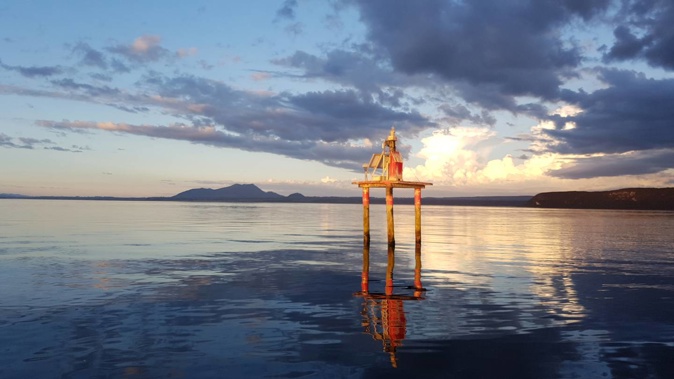
Scientists have detected more than 300 quakes in the centre of Lake Taupō over the past three months – but that doesn't mean there's been any big change in the enormous caldera "supervolcano" beneath it.
Since May, GeoNet has been monitoring a spate of earthquakes around the lake area similar to swarms observed across 2008 and 2009 - and most recently in 2019.
The area under Lake Taupō - both inside and outside of the caldera - has been seismically active since 2000, with just over 5000 earthquakes located by GNS Science instruments.
"Since the start of May 2022, we have located over 300 earthquakes, mostly beneath the central part of the lake," duty volcanologist Agnes Mazot said.
The quakes had been clustered in small groups in various locations around the area, and had ranged in size between magnitude one to 3.6, at depths mostly between 4km and 14km below the surface.
"The largest earthquake in the sequence has been too small to cause any damage, but almost 300 people living in the area reported feeling it."
Around the Taupō area, quakes tended to occur in several long-lived clusters.
This year, about five clusters have been active - beneath the central part of the lake, north of the lake at Wairakei, Rotokawa, and Ngatamariki, and at Tūrangi - but it'd been the one in middle of Taupō in which scientists had seen an uptick in activity.
"Earthquake activity like this is very typical globally and has been common in the Lake Taupō area, occurring every few years," Mazot said.
Further back – notably in 1922 and 1983-84 - Lake Taupō had seen swarms and episodes with many more, and larger earthquakes that have persisted for much longer.
"The 2022 sequence of earthquakes stands out, but at this stage has fewer earthquakes than 2008, 2009, and 2019."
As well as recording and locating earthquakes, GeoNet also monitored ground deformation around Lake Taupō.
/cloudfront-ap-southeast-2.images.arcpublishing.com/nzme/WM7DSWCLTGNA3ZIZZCSRE64UF4.jpg)
This map shows locations of some of the hundreds of small earthquakes scientists have detected around Lake Taupō in the first half of this year. Image / GNS Science
Analysis of the 2008-2009 activity indicated that the behaviour of the Taupō volcano was influenced by a slow-slip event on the Hikurangi subduction zone to the east.
Some aspects of the earthquake activity and ground deformation were thought to be triggered by the slow-slip event, while some was from volcanic processes.
The 2019 earthquake swarm was also studied by researchers in the collaborative ECLIPSE project, who showed quakes were linked to the margins of a relatively solid "magma mush zone" under the volcano.
Magma mush zones, like that identified under Taupō, were areas of almost solid magma that contained small pools of melt, or magma liquid.
"It is unclear whether the ongoing earthquakes and uplift is related to regional deformation and/or magma movement," Mazot said.
"There is a slow-slip event occurring on the Hikurangi subduction zone at this time.
"However, the lack of significant ground deformation likely rules out large-scale magma involvement."
Mazot added that changes in the background activity at caldera volcanoes like Taupō were very common.
"There have been 16 episodes of unrest at Taupō in the past 140 years, all of which quietened back down again," she said.
"Taupō is an active volcano and earthquakes, and uplift or subsidence will continue to occur in the future."
The latest activity comes as a new study has shown how Taupō's bed has been constantly rising and falling over the last few decades.
Based on trove of measurements spanning 42 years, the study found areas north of Lake Taupō have sunk by about 14cm over that time – while the lakebed near Horomatangi Reefs has been uplifted by around 16cm.
Taupō – regarded as the world's most frequently active supervolcano system - has caused some of the largest eruptions in our planet's history.
Lake Taupō essentially fills the hole left by one of those monster blows - the Oruanui eruption, around 25,400 years ago, which spewed more than 1100 cubic km of pumice and ash into the atmosphere that travelled as far as Antarctica.
Taupō's most recent major episode - a devastating event 1800 years ago - fired out more than 120 cubic km of pumice and ash and obliterated the surrounding landscape.
Take your Radio, Podcasts and Music with you









